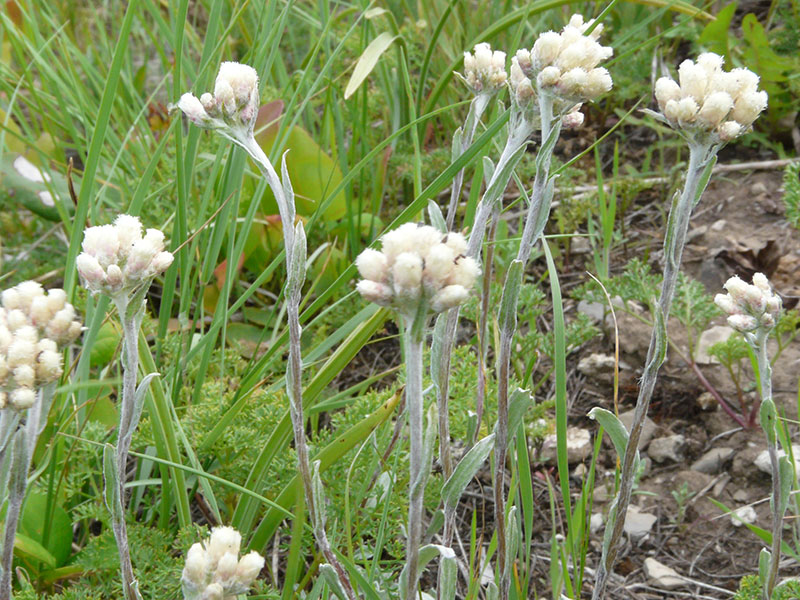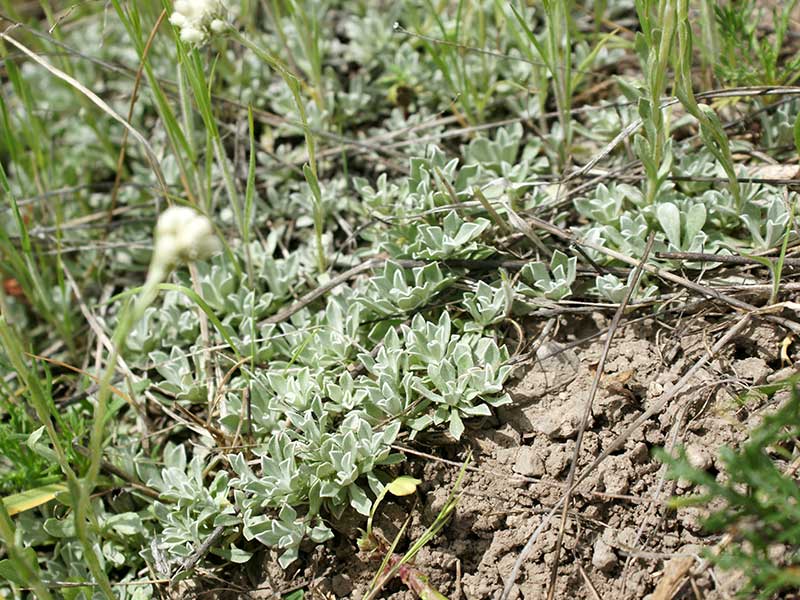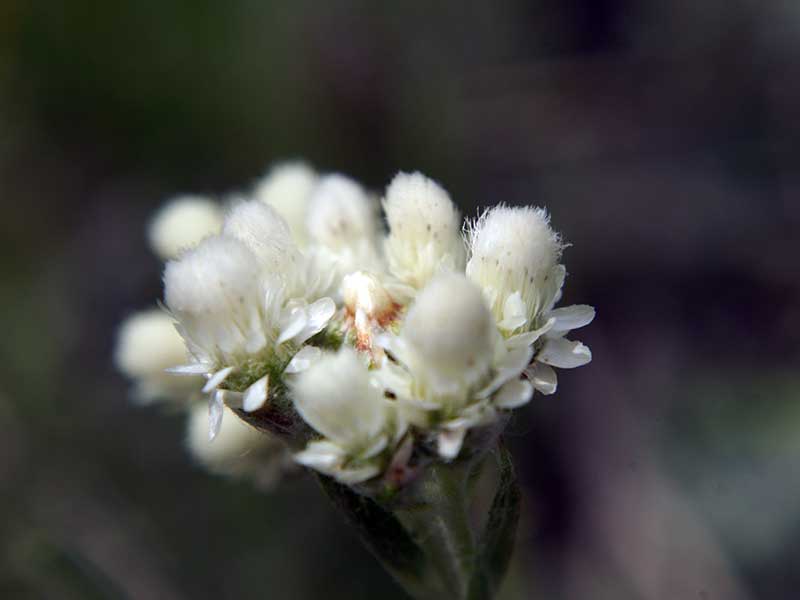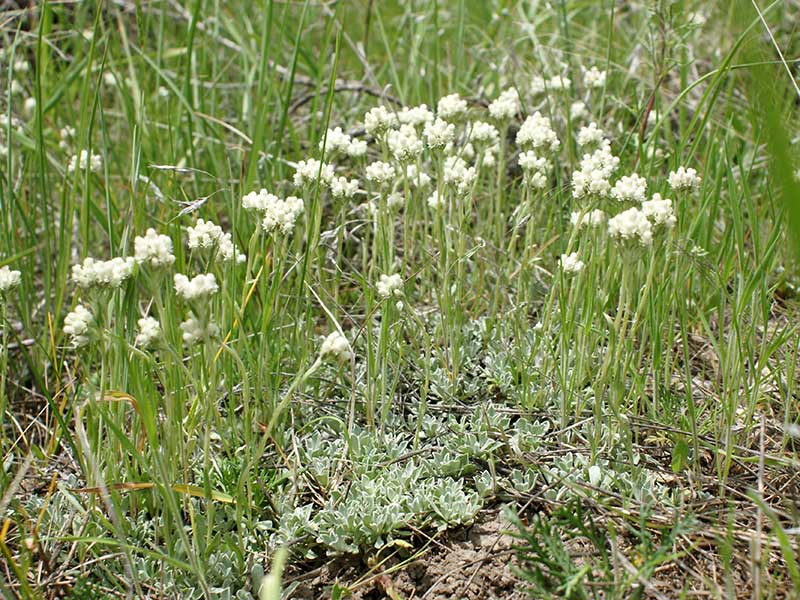Antennaria spp. / pussytoes
- small clusters of white flowers, often fringed with red
- flowers look like a cat’s toes, sort of
- newest leaves silvery/hairy
- exposed, in many different habitats
Pussy-toes are so called because of the resemblance of the floral display to the toes (“digital pads”) of your cat, claws retracted. Don’t tell the dog. When the “toes” are open, you can see that there are a bazillion really small white or yellow flowers there. The really colorful parts of the flowers, e.g. the rosy bits in A. rosea (rosy pussytoes), are actually bracts (phyllaries). Some say the “flowers” are not particularly attractive, but that is a matter of opinion… I like them. They are certainly noticeable because they are so numerous, so exposed.
Although I would hesitate to put money on it, I think the species illustrated here is actually Antennaria microphylla / littleleaf pussytoes.
Pussytoes are mat-forming perennial herbs, propagating by seeds, but also vegetatively by stolons. The leaves are woolly-looking, giving it a rather distinctive grey appearance. The inflorescences are only a few inches tall, and each contains several flowering heads – the individual “toes”.
There are quite a few members of the genus Antennaria in Idaho, and they don’t look all that different one from another; even within a species, flower colors can be variable. Thus, the exact “white” species illustrated here is uncertain. Possibly, it’s A. media (Rocky Mountain pussytoes); however, it could also be the pink species, A. rosea, just lacking the rosy bracts. In any case, look for these plants in tundra-like habitats and on rocky ground in the sun.
Pussytoes are dioecious, meaning that male and female flowers are on different plants. There is not much difference in appearance between the genders, at least at the cellphone level. Oddly, about 90% of the plants are female. And while pollination and seed-set do occur, the vast majority of the seeds are produced by apomixis, i.e. they are clones of their mother, but the seeds are viable. Dandelions are another example of an apomictic species.
The rosette of basal leaves is also attractive even when the flowers aren’t there, especially in fall and winter. Young leaves in the spring are silvery because of their dense pubescence (hairs). They lose these through the season but the leaves persist over the winter, so the next spring you get a two-toned plant. None of the leaves is very big… not even 2″ long. An important diagnostic character, however, is that the leaves have a single prominent vein and a pointed tip.
Pussytoes has been described as a plant of many habitats. It grows in dry open areas, meadows, open woods and forests, plains, alpine meadows. It is also a very morphologically diverse species, meaning individuals can look very different. This has been attributed to various factors, including polyploidy and apomixis.
A final note: Overall, as a genus, the pussytoes are a taxonomic mess and difficult to distinguish. This has been blamed on hybridization, polyploidy and apomixis. Indeed, rosy pussytoes may be completely white, so the only really easy feature of the species isn’t reliable at all. Best to just call them pussytoes.
| Color | |
|---|---|
| Family | |
| Blossom size | |
| Inflorescence size | |
| Inflorescence type | |
| When? | |
| Where? | disturbed, exposed, rocky areas, undisturbed, with sagebrush |



